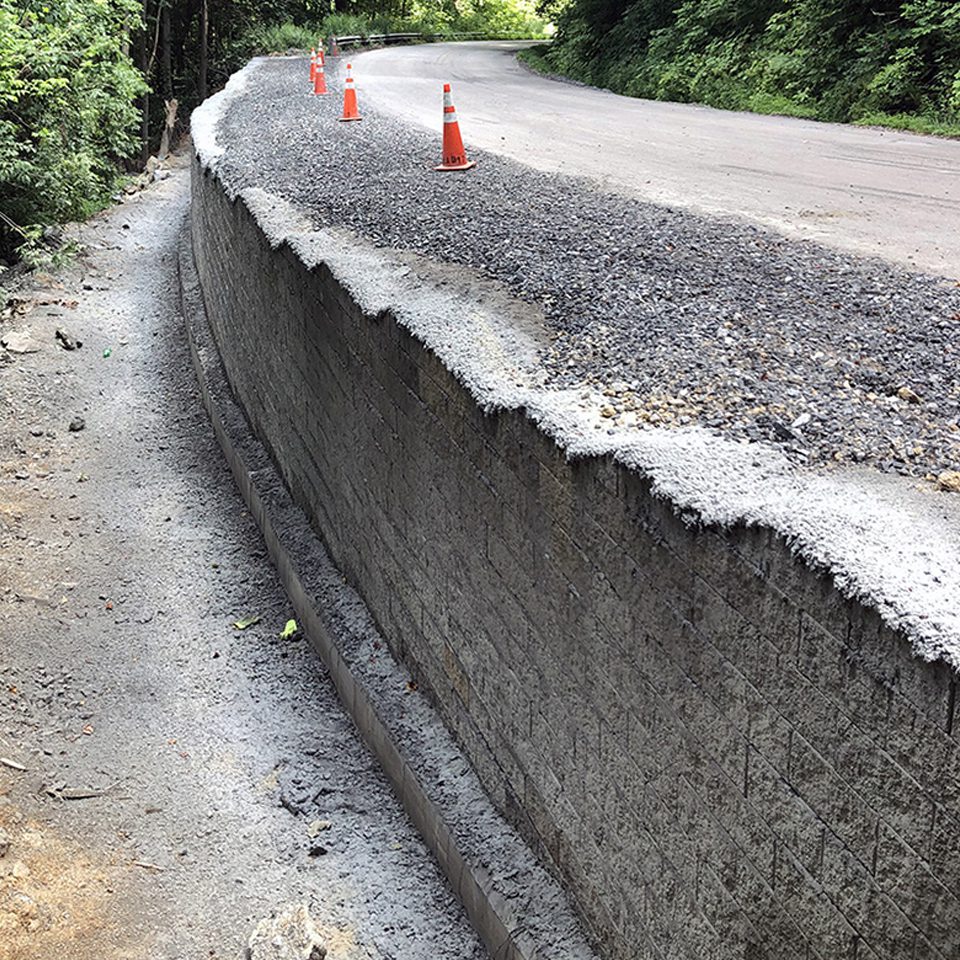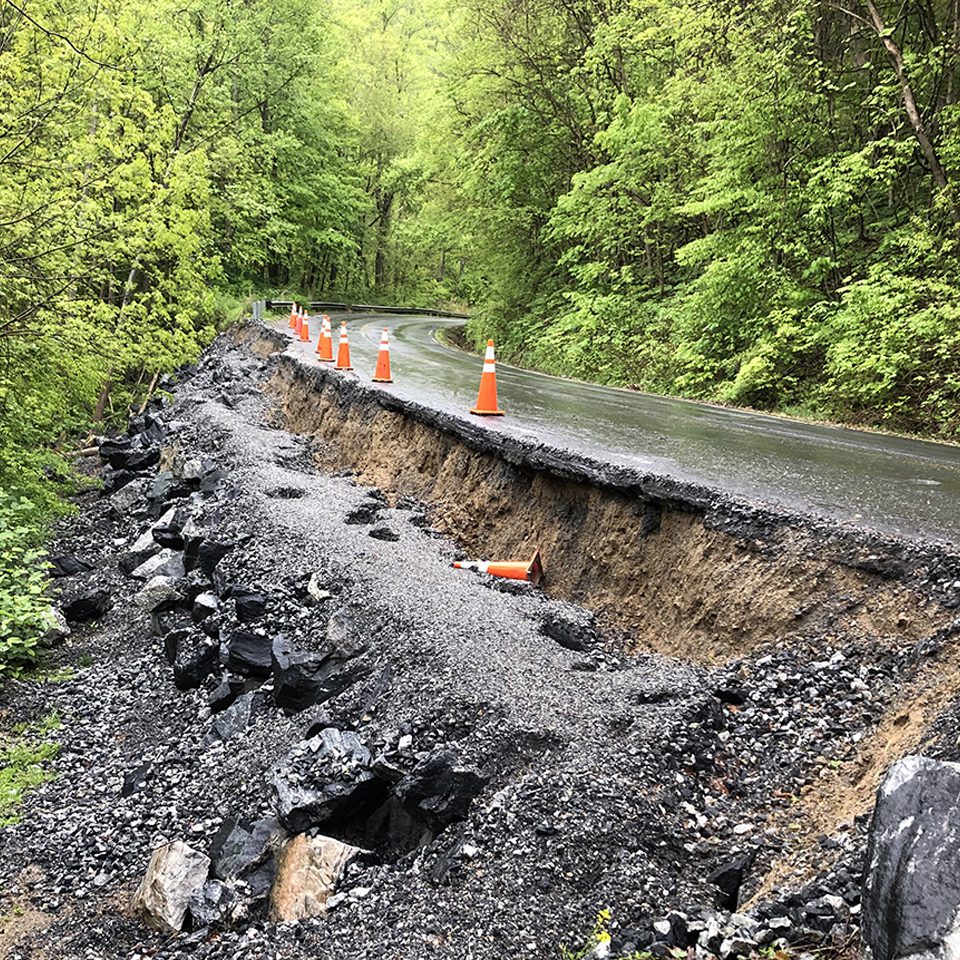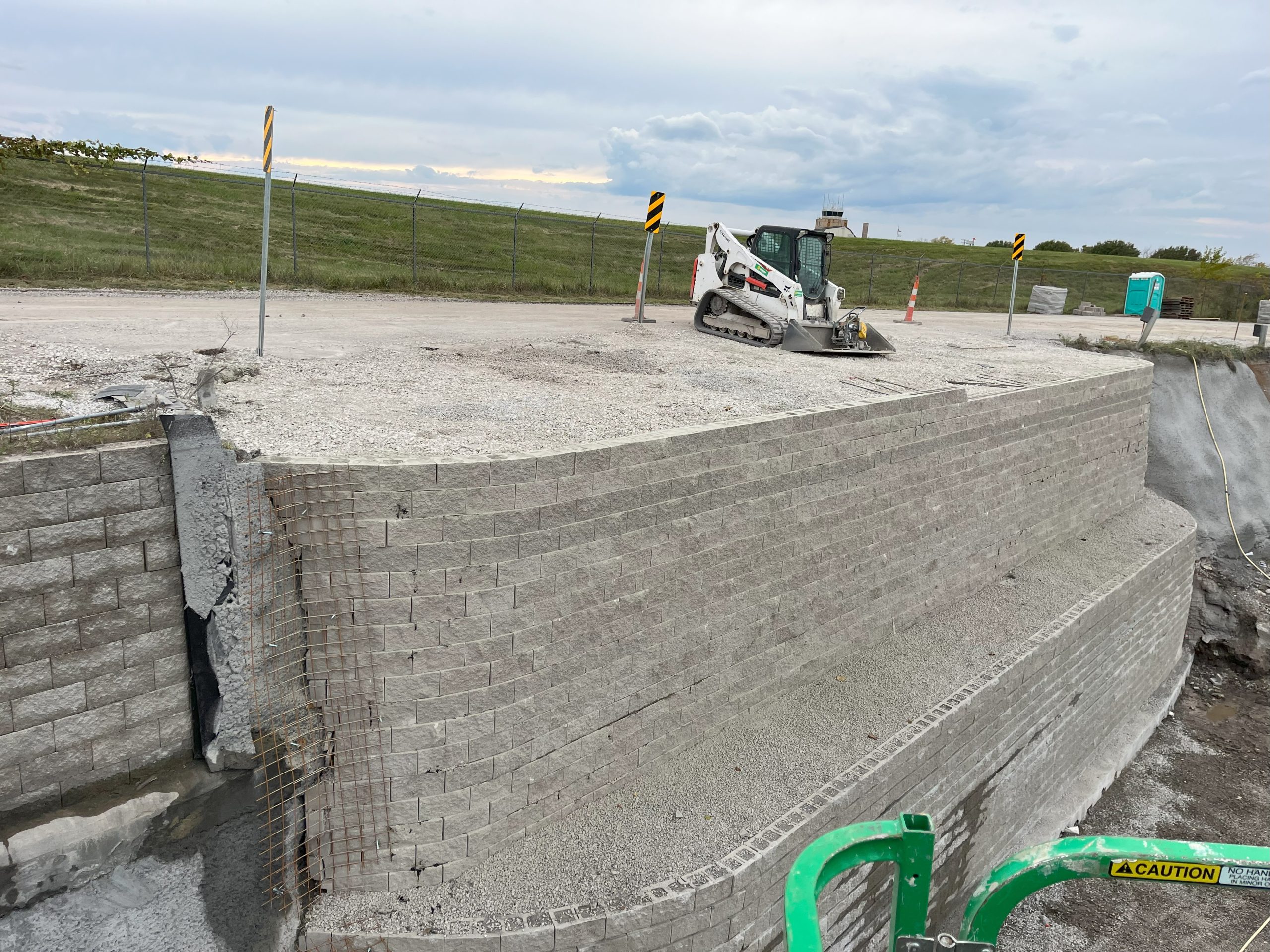




A Mechanically Stabilized Earth (MSE) retaining wall is a composite structure consisting of alternating layers of compacted backfill and soil reinforcement tie-back elements fixed to a wall facing. The stability of the wall system is derived from the interaction between the backfill and soil reinforcements, involving friction and tension. The result is a coherent gravity assembly that is flexible and can carry a variety of heavy loads. These engineered structures’ stability can be influenced by required large foundations, properties of the backfill used, and construction quality. On average, 5% of installed MSE walls experience failures.
Although the components of MSE and Geosynthetically Confined Soil® (GCS®) are identical (reinforcement, facing, and earth backfill), the similarities end there. The grids used in MSE are designed – and perform as – tie-backs. The load in the MSE system is carried by the reinforcement material, with only negligible composite behavior. In contrast, GCS® using close spacing performs as a unique composite system. The function of the reinforcement material in GCS® is not to carry the load but to confine the granular soil particles so they cannot dilate. If the individual particles are prevented from dilating, they will fail through shear. Shearing bedrock particles is difficult and explains why GCS® pillars require nearly 22,000 lbs/sf to fail. Closely spaced inclusions, 8 to 12-inches, provide significantly better confinement, causing the failure mode to divert to shear through the particles. 8-inch spacing with woven geosynthetics with wide strip tensile capacities of 100 to 400 pounds per foot is a standard solution. Compaction is critical for GCS® particle confinement. Uncompacted backfill will not self-compact with loading; rather, it will fail.
If you are interested in a no-obligation site visit to determine if our services fit your needs, call us at 855.579.0536 or fill out our contact form.